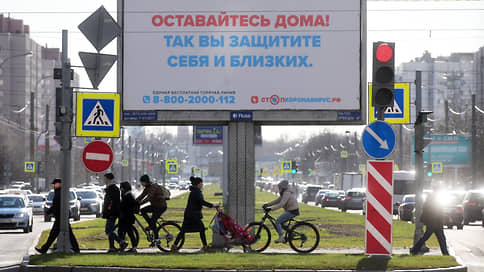Do not scare, frightened – Newspaper Kommersant No. 11 (7456) of 01/23/2023
[ad_1]

Statements about the risk of dying due to coronavirus were no more effective than calls to wear masks in terms of prevention, but at the same time they significantly increased people’s anxiety. This conclusion was reached by an international group of researchers (including HSE scientists), who interviewed over 15,000 people from 84 countries. The authors insist: the results of their work cast doubt on the “expediency” of reminding people that they “could lose during a pandemic.”
From April to September 2020, scientists from 84 countries analyzed official communication strategies in working with the population in a pandemic. Researchers (including Russian experts from the Higher School of Economics, HSE) tried to figure out what is more profitable to use: positive language that emphasizes the benefits of certain behaviors, or negative language that can scare people who do not follow safety rules. In other words, which message is more effective: “Wear a mask. Save lives” or “If you don’t wear a mask, it could lead to death.” To do this, they interviewed more than 15 thousand people speaking 48 languages. The authors note that the work was “the first such a large-scale and representative cut of the impact of information messages on people’s behavior during a pandemic.”
The results of the study were published in the journal Affective Science. They showed that both types of messages had equally little effect on people’s social behavior. At the same time, information about possible losses significantly – 1.5 times compared to positive information – increases the anxiety of the audience. Moreover, the effect of anxiety on stress hormone secretion may increase with age. This potentially puts older people, who already face an increased risk of contracting COVID-19, in an even more vulnerable position.
To show that the results do not depend on the use of a particular model, method of analysis or sampling, the scientists tested them on different data pools using different statistical procedures. Three versions of the formulation were analyzed and 560 variants of calculations were carried out on different samples. More than 80% of the models showed “consistent results” in all 84 participating States. “We found that the wording used and culturally specific connotations do not affect the results obtained in individual countries,” emphasizes Irina Prusova, one of the authors of the study, junior researcher at the Research and Educational Laboratory for the Psychology of Social Inequality at the National Research University Higher School of Economics.
The researchers acknowledge that anxiety due to reports of “possible loss” was relatively mild (2.58 out of 5 compared with acute conditions associated with clinically diagnosed anxiety disorders). However, they insist that their findings cast doubt on the “feasibility” of reminding people of “how much they have to lose during a pandemic.”
Commenting on the results of the study, Alexei Firsov, a sociologist and founder of the Platforma social design center, says that the official messages of the Russian authorities about anti-coronavirus measures were for the most part “dull and bureaucratic”. However, the officials “wavelike” attempts to motivate people more aggressively, playing on the feeling of fear – and then the messages became “hard directive.” This is also why, says Mr. Firsov, sociologists have recorded a low level of citizens’ trust in the government in matters of prevention and treatment of COVID-19. “A conversation with the population, reasoned, with the right balance of emotions, was not found either then or now,” Aleksey Firsov is sure.
According to the psychotherapist of the telemedicine service “Doctis” Yulia Bolotova, the emphasis on the “negative” way of communication was expected. Negative news attracts more media attention, and the negative side of the event wins over the positive one way or another, otherwise it ceases to be perceived as a problem. Maria Danina, co-founder of the online school of psychological professions “Psychodemia”, notes that the findings of the study are similar to data on the perception of warnings about inappropriate content: “Studies have shown that warnings about the potential emotional danger of information in themselves cause increased anxiety. That is, by formulating a warning in terms of how dangerous it can be, we unwittingly evoke an emotional reaction to the threat.”
The anxiety that arose during the pandemic did not disappear with time, Yulia Bolotova continues, just other reasons appeared: “I see from my clients that it is precisely those people who came because of anxiety during the pandemic, now they come with anxiety about others reasons – the situation in the country, the fear of losing a job, the uncertainty of even the near future. Maria Danina confirms that in 2022, Psychodemic experts also recorded a multiple increase in the demand for content related to anxiety. “In addition, the demand for corporate psychological assistance has also increased. All this, among other things, is a consequence of the events of recent years,” said Ms. Danina.
Yulia Bolotova recalls that this process is not harmless: “An anxious person loses a sense of security, and this is a basic need. If he is in this state for a long time, it affects interpersonal relationships, relationships with children and work. This, in turn, neuroticizes others, and the overall level of stress, even in people who themselves are less prone to anxiety, increases.
[ad_2]
Source link








